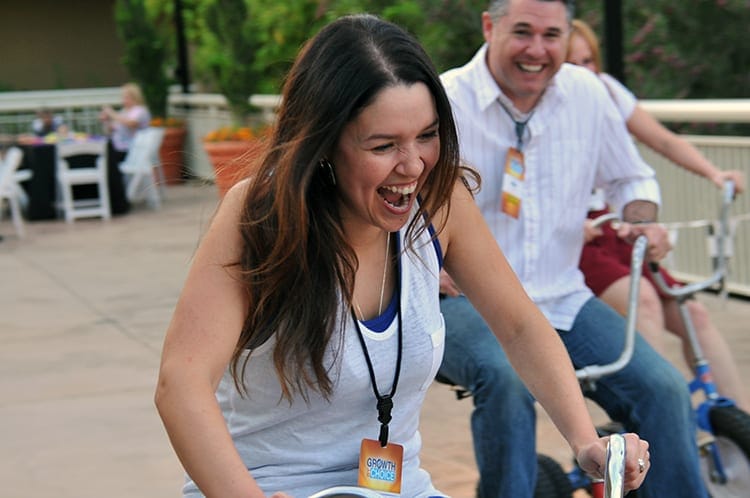
Photography and Story Telling
On Monday morning, bright and early, I was interviewed by a Ahron Glazer for his Executive Talk Podcast series and Blog. It was a great interview (if I do say so myself). We discussed strategies for marketing your business during COVID-19, building trust with clients, and brand as the soul of your business.
But my favorite question was when Ahron asked me about how to capture photos that tell a story. He was fascinated by the subject, and really wanted to delve deep. It’s actually a tricky question.
The greatest photos in history tell a story. They capture a moment in time that symbolizes everything going on at that point in history. They are historical placeholders. The great photo shows what’s happening inside the picture itself, but also how that snippet relates to a larger context. Great photos tell tales about individuals, about one person as a microcosm of a larger society.
I started as a photo journalist, and it was the attack on the World Trade Center on September 11, 2001 that launched my career. The best pictures from that day captured what happened to individual people as they became symbols of the larger terrorist attack.
Ahron quested how you, as a photographer, capture those stories.
Here’s the thing. The best photographers let the events tell the story. They observe as people write their own script. They open their eyes and see what’s going on around them; then they let events speak to create the photograph. The best photos are powerful because they accurately represent a larger dynamic. One face speaks of a thousand similar faces. One captured moment symbolizes a thousand similar moments. One click of the camera’s shutter paints one tile; that tile falls within a greater mosaic clarifying a larger picture.
When you work as a professional corporate photographer, the client wants to write the story your photos will tell. Your job is to capture images in a way that represents THAT client story (which may not be what’s actually happening.)
For example, we photograph conventions and conferences, and the instructions from clients are always the same. (BEFORE COVID-19!) They want you to capture large crowds of diverse people, highly engaged and smiling. For cocktail parties, clients would prefer no alcoholic drinks to be visible within the photos.
Now think about that. What’s actually happening at the cocktail reception is people are drinking, and some people are drinking heavily. Perhaps it’s a group of grocery executives. Not a diverse crowd. Typically all white. Typically male. So singling out the one African American female CEO who is sipping on seltzer ends up the go-to shot. That photo tells the story the client wants: a diverse crowd. Modern. Sober. One image creates the approved narrative.
Never mind it’s the anomaly.
It’s the job of a photojournalist, however, to capture images that don’t show that scripted bias. The marketing people of an event are trying to sculpt the story told one way; it’s the photojournalist’s job to ignore those talking points and show what’s happening.
When I first started as a corporate photographer, a client followed me around at an event ranting: “CROWDS! CROWDS! CROWDS!” The problem? There were no crowds. Half the rows and half the seats were empty. I did everything I could to make the rooms look packed. I used angles where the back of people’s heads blocked the empty rows in front of them. I used a long lens, and zoomed in on pockets of crowds on an otherwise sparse convention floor.
In the end, the client wasn’t happy. Never mind there were no crowds to photograph. Pushing the photographer to capture images that sold a different story was useless. They never hired me again; I was thankful. Sometimes it’s impossible to tell a tale with photos that are an obvious lie.

Other times, clients will call me asking “IS THIS ALL THE PHOTOS?” Oh boy. That’s when you know you’re in trouble. When I photograph, I take what I see. I’m done when I can’t see any more stories. I stop shooting when I believe I’ve captured the story of that event. If a lot isn’t going on, there aren’t going to be many photos. If the event is full of interesting and dynamic vibes, then I keep shooting until each of those individual tales are told.
A great photographer sees and records the story in front of them. They let the events dictate the picture; they don’t try to create a photo where the picture writes a completely false narrative. A great client understands the difference.
That said, years ago I was asked to be the photographer of a CEO for a major airline as he traveled the country. He did a whistle-stop tour, visiting the pilots, flight attendants and support personnel in different cities. He was not a popular CEO. In fact, many of his team despised him. They booed his speech. Not good.
My job? To capture images that demonstrated how popular the CEO was with his team. Of course, I’m a professional. I know how to capture those images. And I did. I was their go-to photographer because I was good at constructing photos that told the story they wanted to tell. Was it a lie? Yes and no. Not everyone in the crowd hated the man; I focused on his supporters. That’s part of the job of a corporate photographer. But the client understood what I was up against. They never complained. They painted the corporate picture they wanted to paint. For me, I’m OK with that. Call it focusing on the positive. If I don’t want to tell a sanitized corporate story, then I should have remained a photojournalist. Messaging a story is one thing. Making it up is another.
By the way, that CEO was forced to resign as part of the New Jersey Bridge-gate scandal.
Some things, you just can’t spin.
